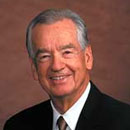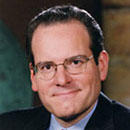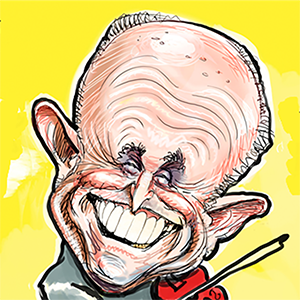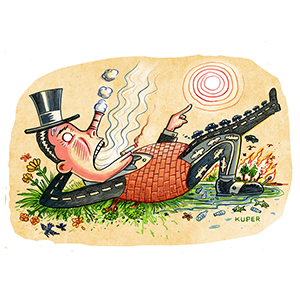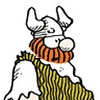Business
/ArcaMax

How AI is revolutionizing ATL's international terminal
For a U.S. citizen arriving in Atlanta these days, there’s a world in which you might not even need to pull out your passport.
The process of a Customs and Border Protection officer manually reviewing American passports at Hartsfield-Jackson Atlanta International Airport has been replaced with tablets that capture a passenger’s image and ...Read more

Federal judge denies OpenAI bid to keep deleting data amid newspaper copyright lawsuit
NEW YORK — A federal judge has upheld a ruling directing OpenAI to preserve logs and data slated for deletion after news outlets including the Daily News suing the technology giant accused the company of hiding evidence of copyright infringement.
The new ruling, issued Thursday in Manhattan Federal Court, denied the company’s objection to ...Read more

If Congress tries to sell WA federal lands, buyers may hard to come by
Proposed legislation in Congress to sell off Bureau of Land Management property would include thousands of acres in Washington.
However, with restrictions on what the land can be used for and which parcels can be sold, people in the state's real estate business doubt there’ll be many buyers for the land if the bill passes.
Earlier versions ...Read more

S&P 500 hits record high after $10 trillion rally: Markets wrap
Wall Street traders dodged a flurry of tariff headlines to drive stocks to all-time highs, capping a week that saw a cooling in Middle East risks and signs the U.S. economy is holding up amid subdued inflation. A rally in Treasuries stalled. The dollar advanced.
A surge in equities after April’s tariff-fueled meltdown drove the S&P 500 to its...Read more

Nvidia breakout puts $4 trillion market value within reach
Two years after Nvidia Corp. made history by becoming the first chipmaker to achieve a $1 trillion market capitalization, an even more remarkable milestone is within its grasp: becoming the first company to reach $4 trillion.
After the emergence of China’s DeepSeek sent the stock plunging earlier this year and stoked concerns that outlays on ...Read more

Michael Hiltzik: An AI firm won a lawsuit for copyright infringement -- but may face a huge bill for piracy
To judge from the reaction among the AI crowd, a federal judge's Monday ruling in a copyright infringement case was a clear win for all the AI firms that use published material to "train" their chatbots.
"We are pleased that the Court recognized that using works to train (large language models) was transformative — spectacularly so," ...Read more

Child safety advocates and California's cannabis industry battle over tax funds
A proposal to pause a planned tax hike on retail cannabis has set off alarm bells among child safety advocates whose substance use prevention and treatment work depends on funds generated by sales of cannabis products. Industry members say the move, which lawmakers in Sacramento are considering, is necessary to keep struggling retailers afloat. ...Read more

Auto review: Is the 2025 Rivian R1S a future luxury icon? Perhaps
Modern-day culture seems to reward flashiness, crudeness and design vulgarity over taste, refinement and elegance, something that can be seen in the vehicles we choose to drive. Never mind that most buyers never use their SUV’s capabilities. One supposes they like their size, step-in height and station wagon-like utility. But taste? They are ...Read more

Auto review: Gladiator Mojave a bit ill-mannered on-road, but brisk on the dunes
Sure, you can find a more comfortable midsize truck, one that’s easier to drive — and costs less, too.
But the 2025 Jeep Gladiator pickup — essentially a rugged Wrangler with a cargo bed — is all about off-road capability. It offers four advanced 4x4 systems, steep approach and breakover angles (44.7 and 26 degrees) for the big bumps, ...Read more

This luxury brand tops J.D. Power's initial quality study
Lexus at No. 1 and Nissan at No. 2 topped J.D. Power's 2025 Initial Quality Study, replacing Ram and Chevrolet for the least problems per 100 vehicles in the first 90 days of vehicle ownership.
Lexus had an average of 166 problems per 100 vehicles. The top Detroit brand was Chevrolet at No. 4 and the third-highest mass-market brand with 178 ...Read more

Auto review: Road trippin' in the eager, entry-level Acura ADX
CHARLESTON, West Virginia — Acura has finally completed its SUV menu with the entry-level ADX appetizer. It’s a tasty little morsel.
On a road trip to see family in West Virginia, I switched drive modes from NORMAL to SPORT and headed up Charleston’s famed Loudon Heights Road, a twisted two-lane carved into the rocky hill that overlooks ...Read more

Fourth of July barbecues will cost more in California. Here's a breakdown
Fireworks aren't the only thing accompanying Californians' Fourth of July celebrations this year — higher grocery prices will as well.
A California cookout for 10 guests will cost $90.06, compared with the national average of $70.92 and Western regional average of $73.50, according to the American Farm Bureau Federation's annual "marketbasket...Read more

Chicago Tribune offers buyouts to union newsroom employees
Joining the growing ranks of downsizing news organizations across the country, the Chicago Tribune offered a buyout to its union newsroom employees Thursday, the first since days after the newspaper was purchased by investment firm Alden Global Capital in 2021.
The Tribune did not disclose the scope of the buyouts or whether it is also ...Read more

As Amazon's Jeff Bezos weds Lauren Sánchez in Venice, is split with Seattle complete?
With Jeff Bezos and Lauren Sánchez set to marry — spectacularly, controversially — Friday in Venice, comparisons with the original “tech bro” wedding some 30 years ago show just how much Big Tech has grown in both wealth and power.
Bill Gates’ wedding, on the Hawaiian island of Lanai on New Year’s Day 1994, was considered a lavish ...Read more

Recurring US jobless claims jump to highest since November 2021
Recurring applications for U.S. unemployment benefits rose to the highest since November 2021, extending a sharp increase over the past 1 1/2 month and signaling more people are staying out of work for longer.
Continuing claims, a proxy for the number of people receiving benefits, increased to 1.97 million in the week ended June 14, according ...Read more

Criminal use of stablecoins continues growing, task force says
Most illegal activity happening on cryptocurrency ledgers now involves the tokens known as stablecoins, according to a report released on Thursday by an intergovernmental body that develops policies to protect the global financial system against money laundering and terrorist financing.
The findings in the new report from the Financial Action ...Read more

Philadelphia is among areas where renting is trending with millionaires
More millionaires are choosing to rent in Philadelphia.
In 2023, 102 households making $1 million or more annually chose to rent in the Philadelphia metropolitan area, according to a new report from rental listing website RentCafe. That’s up from 22 in 2019.
Across the country, millionaire tenants are attracted to the ease offered by turnkey...Read more

'A retail apocalypse': Big box and chain retailers undergo wave of closures
BALTIMORE — Customers who ventured into Rite Aid at Gittings Marketplace in North Baltimore during its final week in mid-June found a shuttered pharmacy, empty refrigerator cases and an assortment of greeting cards and beauty products at 90% off, but little else.
Across from the drugstore on York Road, a Party City sign tops a building that ...Read more
Real estate Q&A: Can we stop a resident from smoking on the balcony?
Q: Can a resident smoke on his balcony if the smoke is disturbing the resident next door, who also likes to sit on his balcony? Also, a butt fell several floors below on the balcony and burned a hole in resident’s outdoor sofa? — Catherine
A: Smoking can be a heated topic in shared living spaces, especially when it impacts neighbors or ...Read more

With a surging residency rate, this neighborhood is transforming LA
Like many downtown Los Angeles residents, Ricardo Sebastián doesn’t own a car and prefers it that way.
“I do not want the responsibility of owning a vehicle. That’s not for me,” said Sebastián, who grew up in Chicago relying on public transit.
The 38-year-old consultant travels around L.A. by train and bus, but finds most of what ...Read more
Popular Stories
- How AI is revolutionizing ATL's international terminal
- If Congress tries to sell WA federal lands, buyers may hard to come by
- Federal judge denies OpenAI bid to keep deleting data amid newspaper copyright lawsuit
- S&P 500 hits record high after $10 trillion rally: Markets wrap
- Hair care company John Paul Mitchell to move headquarters from California to Texas


